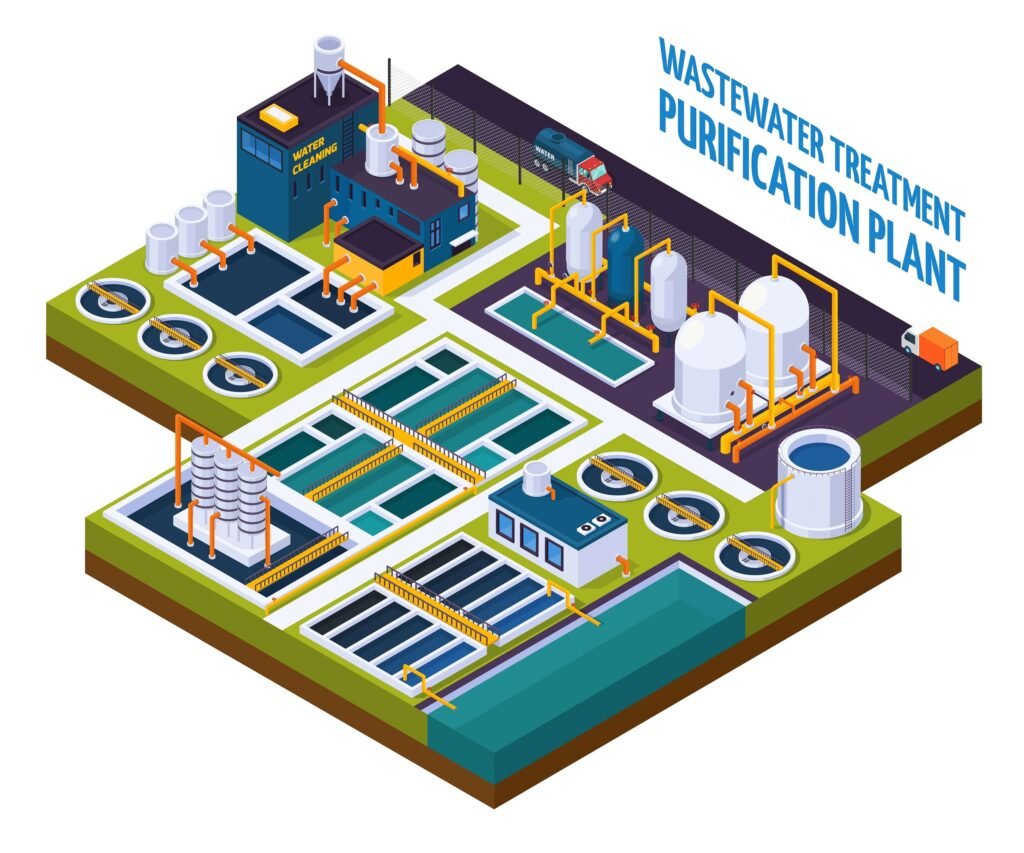Polyaluminium Chloride in Water Treatment

4 Surprising Facts About Coagulant For Water Treatment
June 28, 2022
Water Treatment Companies in Malaysia
January 12, 2023What is Polyaluminium Chloride?
Polyaluminium Chloride, or PAC for short, is a chemical compound used during water treatment process. It is an acidic solution made from aluminium, chlorine, hydrogen and oxygen, and act as coagulating agent.
Polyaluminium Chloride is a safer alternative to several other chemical coagulants. For instance, aluminium sulphate has been widely used as coagulant for many years. It removes contaminates and general turbidity from water during the water treatment process. However, this compound leaves behind large traces of aluminium in the water, causing sludge-like waste and requires further filtration and purification process to achieve clean water. Thus, the compound may implicate the ecosystem and the overall sustainability of the industry.
Polyaluminium chloride on the other hand, possesses lower doses of aluminium. It leaves a significantly fewer aluminium traces in the water, as well as sludge by-products. PAC is characterized by the degree of basification (%), which is the concentration of hydroxyl groups relative to aluminium ions. The higher the basicity number, the lower the aluminium content in the compound – which means the higher the performance in contaminant removal.
How does Polyaluminium Chloride work?
Water treatment is one of the crucial processes to ensure the distribution of clean and safe water to consumers. There are several contaminants and impurities in the water source that need to be removed and treated prior to the distribution. To achieve that, several steps for water treatment processes, including coagulation, flocculation, sedimentation, filtration, and disinfection are performed.
Polyaluminium chloride is the one of the first chemicals that are added in the water during the coagulation process. The compound is highly charged, where it reacts and neutralizes the negative charge on dirt and other dissolved particles. This will allow the compound to bind together to form larger particles.
The clumped material, called flocs, will later settled at the bottom of water, separating the solids and liquid in a process called flocculation. Once the flocs have settled to the bottom, filtration step to separate the water on top and the solid flocs is performed. During this process, the clean water is filtered through different pore size of different materials such as gravel, sands, and charcoal.

What are the features of Polyaluminium Chloride?
Polyaluminium chloride has several features important during water treatment process, and the features are outlined in the following list:-
- PAC helps speeding up the process of flocs formation, and the settling of the flocs at the bottom.
- The process makes flocs that are formed easier to be filtered out.
- PAC helps improve the water quality better as compared to other chemicals.
- PAC helps reduce the overall cost of water treatment by 15-30%.
- Compared to inorganic coagulants or flocculants, PAC is suited to broad water temperature including at low temperature.
- PAC is also suitable at broad water pH, with functionality between pH 5 to pH 9
- Water treated using PAC has fewer salts content and can be used for ion-exchange treatment.
- PAC contains lower corrosivity level and is easy to handle and operate.
Where Can Polyaluminium Chloride be Applied?
There are a few applications of PAC in the domestic and industrial applications, such as:-
- Sanitary treatment of sewage and waste-water
- Drinking water
- Industrial and chemical waste-water treatment in industries
- Paper-making industry
- Washed coal and leather industry
- Printing and dying industry
- Food and beverages industry
- Water treatment in pharmaceutical and medical facilities
- Water treatment in cosmetic industry
- Water treatment in oil refining industry
- Agricultural purposes and applications
Dia-Chemical Sdn Bhd carried three award-winning, polyaluminium chloride products called DIACHLOR® Series with stability and consistency in its effectiveness and quality. The three series are DIACHLOR® PAC Type 1, DIACHLOR® PAC Type 2, and DIACHLOR® PAC Type 3 or Aluminium Chlorohydrate (ACH). They are developed through years of research, with unique technology in producing zero waste. DIACHLOR® Series are excellent product in water clarification, and requires no adjustment in pH and hence are cost-savvy. Learn more about DIACHLOR® products and their features and benefits here.





